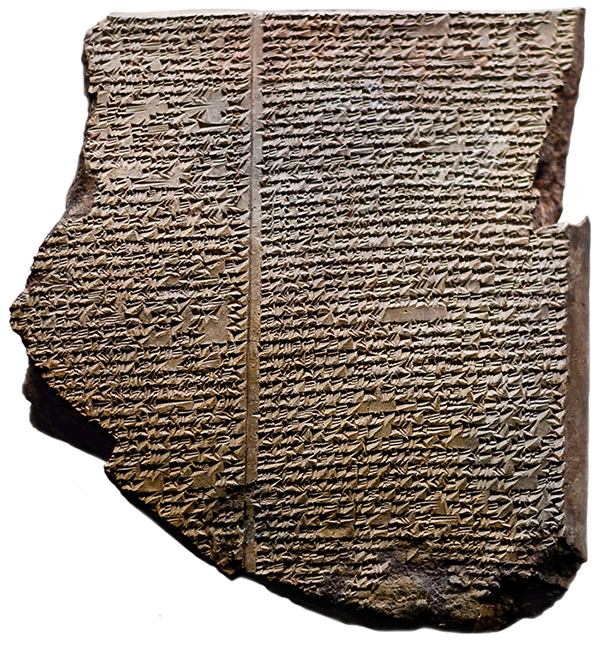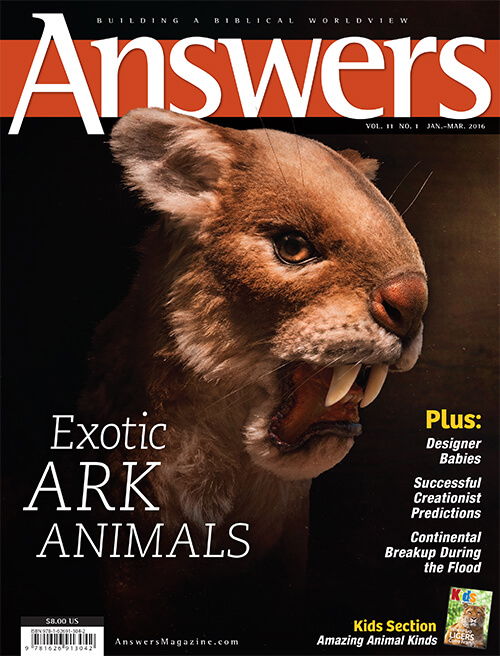How to Myth-Interpret the Bible
Biblical Authority
Our knowledge of the ancient Near East has grown exponentially since the discovery of troves of documents and artifacts. Do they have any value in interpreting the Bible?
I was standing behind a pulpit in Central America looking at a sea of blank faces. How was I to develop rapport with people who didn’t understand my jokes? My Aussie sarcasm didn’t hit its mark. My translator politely told the crowd that my last statement was an example of Australian humor. With their sighs of relief, I continued.
Today, Christians face what seems to be a similar challenge. They are separated from the ancient Near Eastern setting of the Old Testament by vast cultural differences. Does this mean we cannot know the meaning of the Scriptures unless a translator explains the cultural setting?
When we understand the uniqueness of Scripture and basic rules of interpretation, we can marvel at the Bible’s unique clarity that sets it apart from all the other documents of Israel’s ancient neighbors.
What Is the Ancient Near East?
When biblical scholars talk about the ancient Near East, they most often mean the nations surrounding Israel. They include the major world empires from the time of Abraham to the split Israelite kingdom. These nations include Assyria, Babylon, the Hittite empire, and Persia. Most of these once-great world empires lay in ruins before the end of the Old Testament period.
Serious endeavors to study these ancient cultures began in earnest in the 1700s, with the deciphering of Egypt’s hieroglyphics. Since then, some Bible scholars have implied that we cannot understand the context of the Old Testament without understanding these ancient texts and artifacts. If true, God’s people face a significant problem; from the time of these cultures’ ruin to the late 1700s, God’s people have been unable to decipher the historical context, and therefore the meaning, of the Old Testament Scriptures. Is this really the case, or is the Bible clear on its own merits?
The Bible’s Clarity
Before getting lost in all the ancient Near Eastern resources now available, Christians should stop to remember what the Scriptures say about their unique clarity, best summarized in these two passages:
So we have the prophetic word confirmed, which you do well to heed as a light that shines in a dark place, until the day dawns and the morning star rises in your hearts; knowing this first, that no prophecy of Scripture is of any private interpretation, for prophecy never came by the will of man, but holy men of God spoke as they were moved by the Holy Spirit. (2 Peter 1:19–21)
All Scripture is given by inspiration of God, and is profitable for doctrine, for reproof, for correction, for instruction in righteousness, that the man of God may be complete, thoroughly equipped for every good work. (2 Timothy 3:16–17)
The Christian must interpret any external evidence through the lens of the Bible’s supreme authority.
Scripture is God’s inspired revelation to humanity, even though it was written by human authors in a historical context. Moses was a Hebrew raised under Egyptian influence. He wrote Genesis and other books in the middle of the wilderness—over 1,400 years before Christ was born. Even so, Peter and Paul state that these same Scriptures, which include Genesis, are God-breathed and light for readers of their own time.
These claims in Scripture about itself have important implications. While God has revealed His truth in a particular time and setting, the Bible shines clear light and truth for all humanity of all time. This includes the audience of Paul and Peter, who never dug up an ancient library, and it includes us today.
This is why we should not be surprised to read in Article XVIII of the Chicago Statement on Biblical Inerrancy that “Scripture interprets Scripture.” Jesus also told the Jews living in a Greco-Roman culture that if they did not believe Moses’ writings, they would not believe His words (John 5:47). To suggest that we need to study the recently uncovered information about ancient Near Eastern culture to understand biblical meaning is to ignore the way both Jesus and the apostles taught the Old Testament Scriptures.
How to Use the Ancient Near Eastern Context
Context is important. When we study Scripture, we want to understand the same meaning that the author intended to convey to his original audience. A Basic Guide to Interpreting the Bible by Robert Stein, retired Professor of Biblical Interpretation, states, “What a biblical author willed by his text is anchored in history. It was composed in the past, and being part of the past, what the author willed to communicate back then can never change. What a text meant when it was written, it will always mean.”
This context is most often understood simply by paying close attention not only to a sentence or verse but also to the wider context of the paragraph, chapter, or book and its place in the entire biblical history. Extrabiblical sources, such as ancient Near Eastern literature, can help further enhance background understanding about places, customs, events, and more.
Start with a Responsible Process
Old Testament Professor Eugene Merrill, writing in Kingdom of Priests, provides three sensible rules for Bible students evaluating ancient Near Eastern sources in the light of Scripture. First, recognize that the Bible holds unchallenged supremacy and authority in its truth claims. Second, make no apology for holding Scripture as our starting authority when considering evidence. And third, examine the ancient Near Eastern sources critically and with open minds about their place in history.
When studying evidence about life and events in the ancient past, we will all interpret it according to our worldview. If we don’t accept God’s Word as the supreme and reliable truth about history, we will choose man’s fallible interpretation whenever it contradicts what Scripture says about history. The Christian, in contrast, must interpret any external evidence through the lens of the Bible’s supreme authority. In this way, the extrabiblical literature of the ancient Near East can enhance our understanding of the historical background of the biblical text, but it can never determine the actual meaning that is already evident within the text.
Notice Both Similarities and Dissimilarities
In 1873 scholars deciphered twelve tablets to produce what is now known as the Epic of Gilgamesh. This initiated great excitement in the scholarly community because this tale of a catastrophic flood greatly resembled the account of the Flood in Genesis 6–8. Because of the similarities in the Gilgamesh and other ancient Near East flood and creation epics, many scholars claimed that the biblical accounts were derived from the earlier mythology. They relegated the Bible to a subservient position under the ancient Near Eastern materials, believing it should be interpreted in that light. Since then, excessive weight has been placed upon the similarities between ancient Near Eastern texts and the Bible.
When you look at the dissimilarities, the Bible stands out. Old Testament scholar John Currid notes three major differences in Against the Gods. First, the genre differs. The Genesis account is historical narrative whereas the ancient Near Eastern stories are “mythic” narrative (not necessarily written as if they were grounded in actual events).
Second, the Genesis account is monotheistic (one God), whereas the ancient Near Eastern stories are polytheistic (many gods).
Third, the Genesis account shows God as the supreme source of all power, whereas the ancient Near Eastern stories place the gods under the power of magic.
We can see why God warned Israel not to be like the people in the Promised Land or serve their gods (Deuteronomy 12:30). Christians should not be surprised to see perverted accounts of the flood and creation floating around in pagan mythology. We are reminded in Genesis 9–11 that all people once shared a history that must have been retold ever since humanity dispersed from the Tower of Babel. While pagan nations retold this history in mythic form, God preserved a true and scientifically credible account for His people.
Two Positive Uses
Christians have no need to run from the ancient Near Eastern discoveries, which have contributed to biblical scholarship. We have more information than we have ever had for understanding great amounts about social structure, politics, economics, literature, law, and customs of the ancient world. Archaeological digs have helped us rebuild the general living conditions and customs of the times that correlate with the history in Scripture.
When we read about the Assyrian nation’s brutality, for instance, we can actually find depictions of that brutality on the walls found in the ruins of Nineveh. This does nothing to change the meaning of the text but enhances our understanding of the true history that is already evident. The Bible tells us that Jonah did not want to go to Nineveh because He did not want God to be merciful to this brutal people (Jonah 4:2). Assyrian wall reliefs depict them laying siege to cities and impaling or skinning their enemies. When we see this, we gain a greater sense of Jonah’s outrage but are reminded of the wonder of God’s mercy to undeserving people. It helps us to consider that we should not discriminate when it comes to people who need God’s mercy. We are all undeserving people.
Furthermore, discoveries of ancient Near Eastern literature have actually helped us defend the authenticity of biblical history. For example, Jeremiah 39:3 records the Babylonian officials who came to run Jerusalem for Nebuchadnezzar. One of the names of the officers was Nebu-sarsekim. In 2007 a newly deciphered clay tablet names this very officer. Eight years before he came to Jerusalem he gave gold for the temple in Babylon. Many discoveries like this have confirmed the credibility of the historical account in Scripture.
What Happened to Thebes?
Our discovery of panels depicting Assyria’s war with Egypt in 663 BC help us to appreciate the warning of Nahum’s prophecy, that Assyria’s capital at Nineveh was no safer than Thebes (“No-Amon,” Egypt’s impenetrable capital, which Assyria had sacked). Seeing images and reading descriptions of this historical event helps us to imagine the weight of the prophecy in Nahum 3:8–10. Nobody can escape God’s judgment, no matter how high their walls and strong their defenses.

© The Trustees of the British Museum
Relief of the fall of Thebes. From the palace of Ashurbanipal at Nineveh, now in the British Museum.
Lessons for Us All
When scholars give ancient Near Eastern literature a magisterial role in interpreting the Old Testament, they invariably interpret the meaning of the biblical text through the worldview of ancient pagan nations. In the end, they corrupt the biblical text—and particularly the early chapters of Genesis.
With appropriate discernment, however, we need not fear discovering more about Old Testament backgrounds. With the magisterial authority of the Bible intact, ancient Near Eastern artifacts and literature can enhance our understanding of biblical backgrounds. We can be excited every time scholars decipher a new tablet or find a new artifact. Perhaps it will add vibrant color to our view of the historical context of a biblical passage. Perhaps it will corroborate yet another one of the truths in Scripture that never changes.
Answers Magazine
January–March 2016
Discover the role of ancient Near Eastern writings in understanding Scripture and learn about some exotic animals that can only be explained by a Creator.
Browse Issue
Answers in Genesis is an apologetics ministry, dedicated to helping Christians defend their faith and proclaim the good news of Jesus Christ.
- Customer Service 800.778.3390
- Available Monday–Friday | 9 AM–5 PM ET
- © 2025 Answers in Genesis




